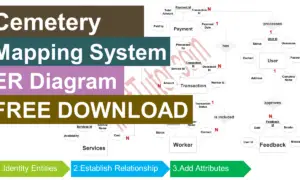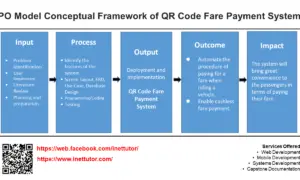Point of Sale Application POS Use Case Diagram
About the Project
POS (Point of Sale) application is designed for the business establishments; the said application will help enhance the productivity of the office and at the same time will make their transactions much easier.
It is a Solution designed with an optimized and systematic POS that has a user-friendly interface as well as a systematic and automated approach for easier handling and this improvement of the Data Management System. This project demonstrates the efficient and effective data and inventory management. It uses less of time for accessing data or information about the client and at the same time makes the process become faster.
Early POS systems were basic and only capable of performing basic tasks such as calculating the total cost of a purchase. As technology advanced, so too did the capabilities of POS systems. Modern POS systems are now capable of performing a wide variety of functions, including processing payments, maintaining sales records, and tracking inventory.
themselves often contract out the development of POS systems to third-party developers.
POS systems are generally created by a variety of stakeholders. These participants include hardware suppliers, software creators, and actual retailers. While software developers construct the programs that are utilized on these systems, hardware manufacturers produce the underlying hardware components of POS systems. The creation of POS systems is frequently contracted out by retailers to outside developers.
POS systems are a vital part of modern retail environments. They help merchants manage their sales records, track inventory, and process payments. As technology continues to advance, so too does the functionality of POS systems. Today, they are capable of performing a wide variety of tasks, including processing payments and tracking inventory. Despite these advances, POS systems are still subject to a number of key challenges, including developing cross-platform applications and ensuring compatibility between different hardware and software products. As technology continues to evolve, POS systems will continue to play an important role in the management of retail operations.
What is Use Case Diagram?
A use case diagram is a visual representation of the different ways a user can interact with a system. It is a useful tool for software developers as it can help them to map out the functionality of a system and understand how different users will interact with it.
A use case diagram typically contains three types of elements:
Actors: These are the people or systems who will be performing the desired functionality.
Activities: These are the specific tasks that the actors will carry out.
Connections: These show how the activities and objects in one use case relate to those in other use cases
POS Use Case Diagram
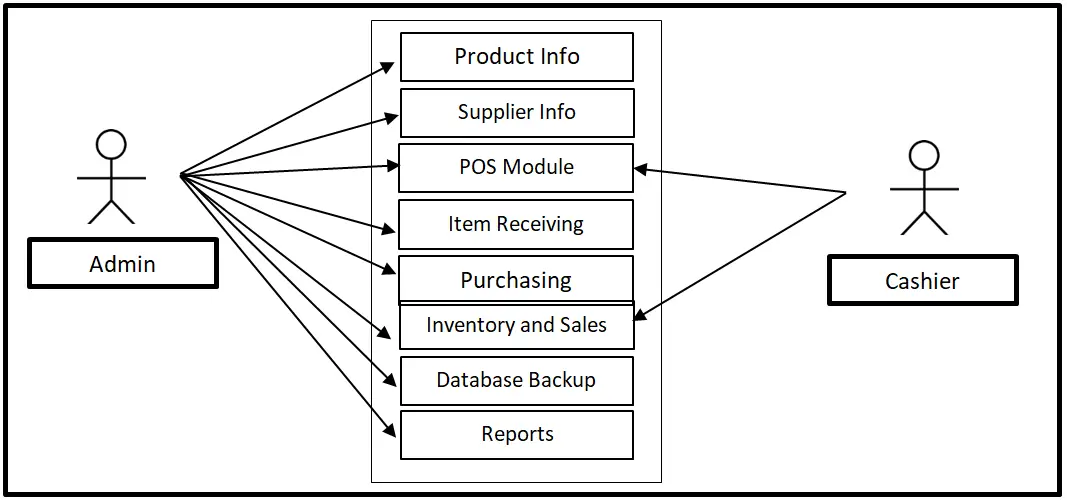
The admin can access the entire core modules of the system while the cashier can access the POS module and Inventory and Sales.
Use Cases
The following are the discussions that describe how a user uses a system to accomplish a particular goal.
Use Case: Product Info
Actor(s): Admin
Description:
This feature is used to manage the product information in the system.
Successful Completion:
- The admin can add, edit, and update product
Alternative: None
Precondition: Admin will login first to access the module and update product information.
Post Condition: updated product information
Use Case: Supplier Info
Actor(s): Admin
Description:
This feature is used to manage the supplier information in the system.
Successful Completion:
- The admin can add, edit, and update supplier
Alternative: None
Precondition: Admin will login first to access the module and update supplier information.
Post Condition: updated supplier information
Use Case: POS Module
Actor(s): Admin and Cashier
Description:
This feature is used to manage the POS Module in the system.
Successful Completion:
- The cashier can use this module to record the prices of the purchases of the customer.
- Admin can search, add, update and remove details in the POS Module.
Alternative: None
Precondition: POS Details for updating
Post Condition: updated POS Module
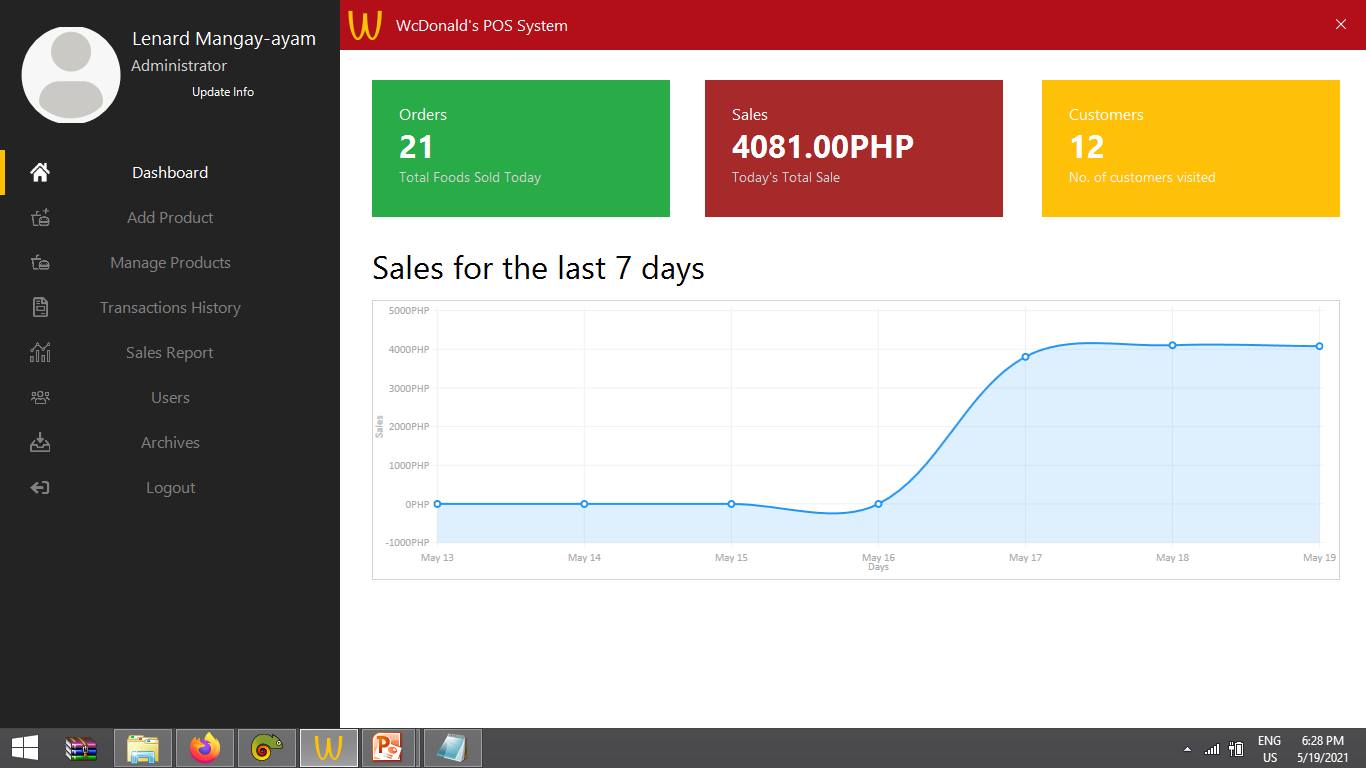
Use Case: Item Receiving
Actor(s): Admin
Description:
This feature is used to manage the Item Received using the system.
Successful Completion:
- The admin can add, edit, update received item
Alternative: None
Precondition: Admin will login first to access the module and update items received.
Post Condition: updated list of items received
Use Case: Purchasing
Actor(s): Admin
Description:
This feature is used to manage the purchasing transaction in the system.
Successful Completion:
- The admin can add, edit, update purchasing
Alternative: None
Precondition: Admin will login first to access the module and update purchased items.
Post Condition: updated list of purchased items
Use Case: Inventory and Sales
Actor(s): Admin and Cashier
Description:
This feature is used to manage the inventory and sales in the system.
Successful Completion:
- The cashier can use this module to view inventory and sales in the system.
- Admin can search, add, update and remove details in the inventory and sales module.
Alternative: None
Precondition: Inventory and Sales for updating
Post Condition: updated Inventory and Sales
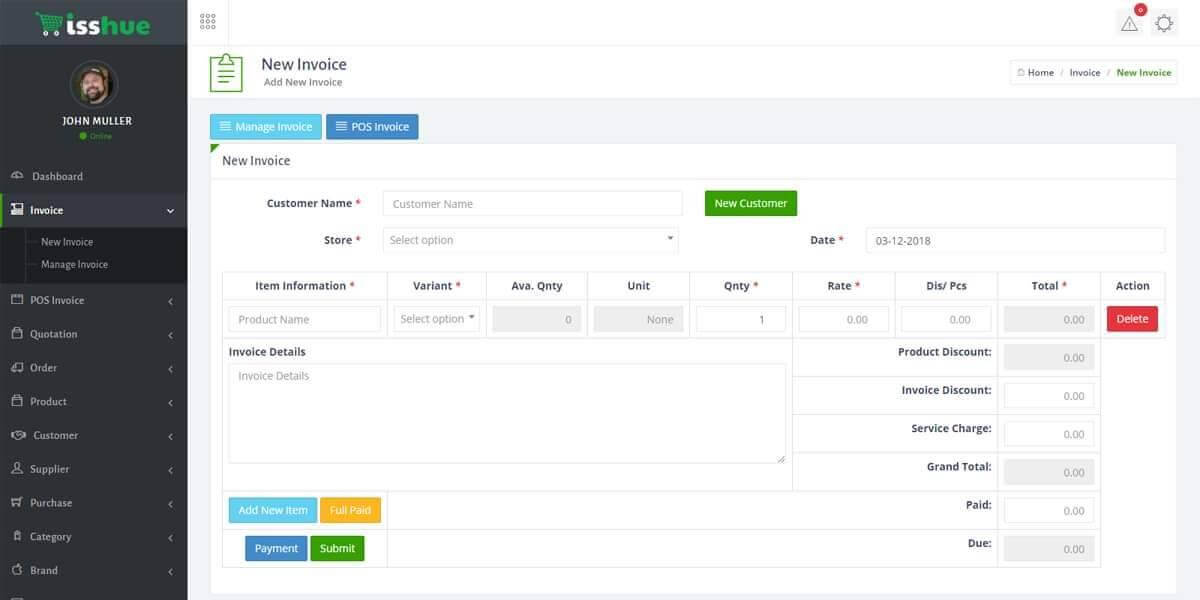
Use Case: Database Backup
Actor(s): Admin
Description:
This feature is used to manage the backup database of the system.
Successful Completion:
- The admin can add, edit, update database backup information.
Alternative: None
Precondition: Admin will create and connect the backup database.
Post Condition: new backup database.
Use Case: Report Generation
Actor(s): Admin
Description:
This feature is used to view and print the reports in the system.
Successful Completion:
- Admin can view, print and export the report of the system.
Alternative: None
Precondition:
- Admin will need to login to access the reports.
Post Condition: hard and soft copy of the report of the system.
Summary
POS (Point of Sale) application is designed for the business establishments; the said application will help enhance the productivity of the office and at the same time will make their transactions much easier. This article focused on the development of the conceptual framework of the study. The admin can access the entire core modules of the system while the cashier can access the POS module and Inventory and Sales. The users of the system will need to login first to gain access to the system and manage different modules and features of the system. POS systems are typically developed in a collaborative environment. This means that a number of different players must work together to create a successful system. The key challenges that these players face include developing cross-platform applications, ensuring compatibility between different hardware and software products, and overcoming the inherent limitations of POS systems.
Readers are also interested in:
Point of Sale System Database Design
Point of Sale System (POS) ER Diagram
Point of Sale System for Pharmacy in C# and SQL Server
You may visit our Facebook page for more information, inquiries, and comments. Please subscribe also to our YouTube Channel to receive free capstone projects resources and computer programming tutorials.
Hire our team to do the project.
